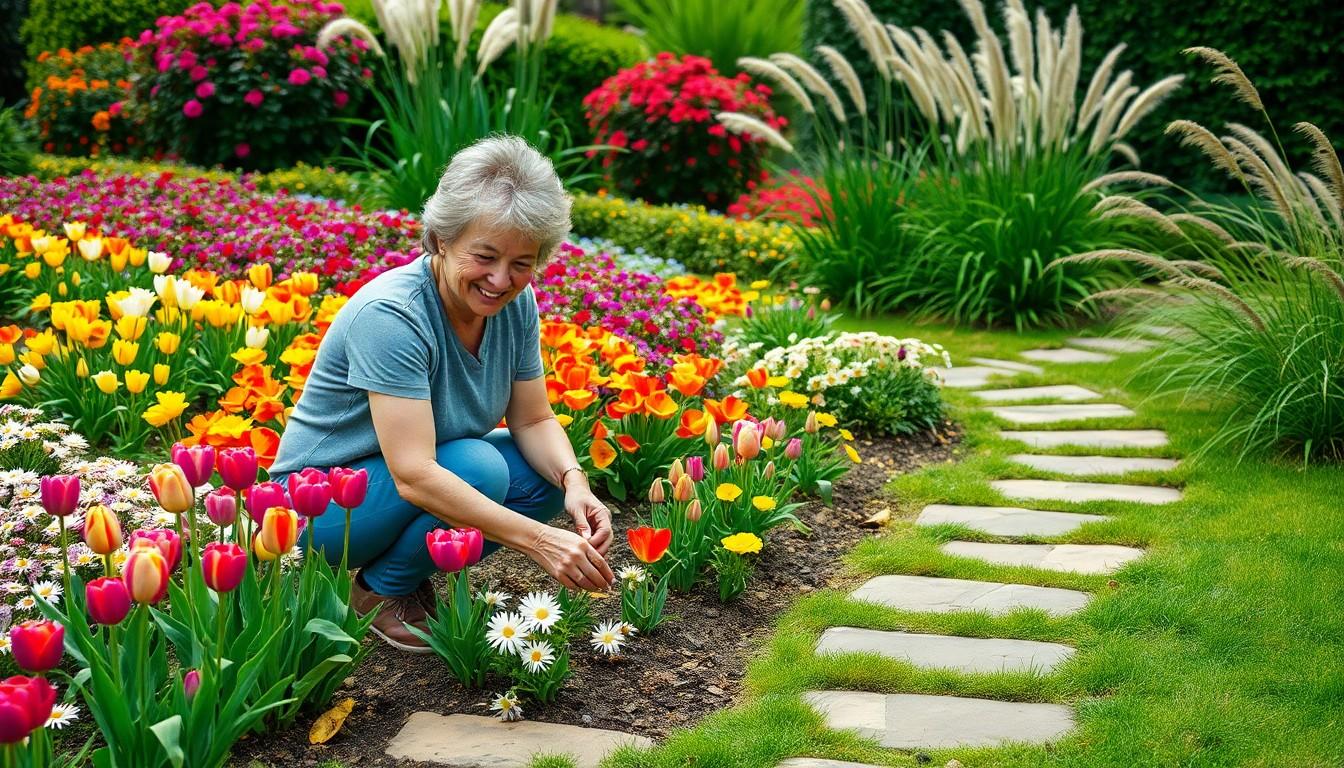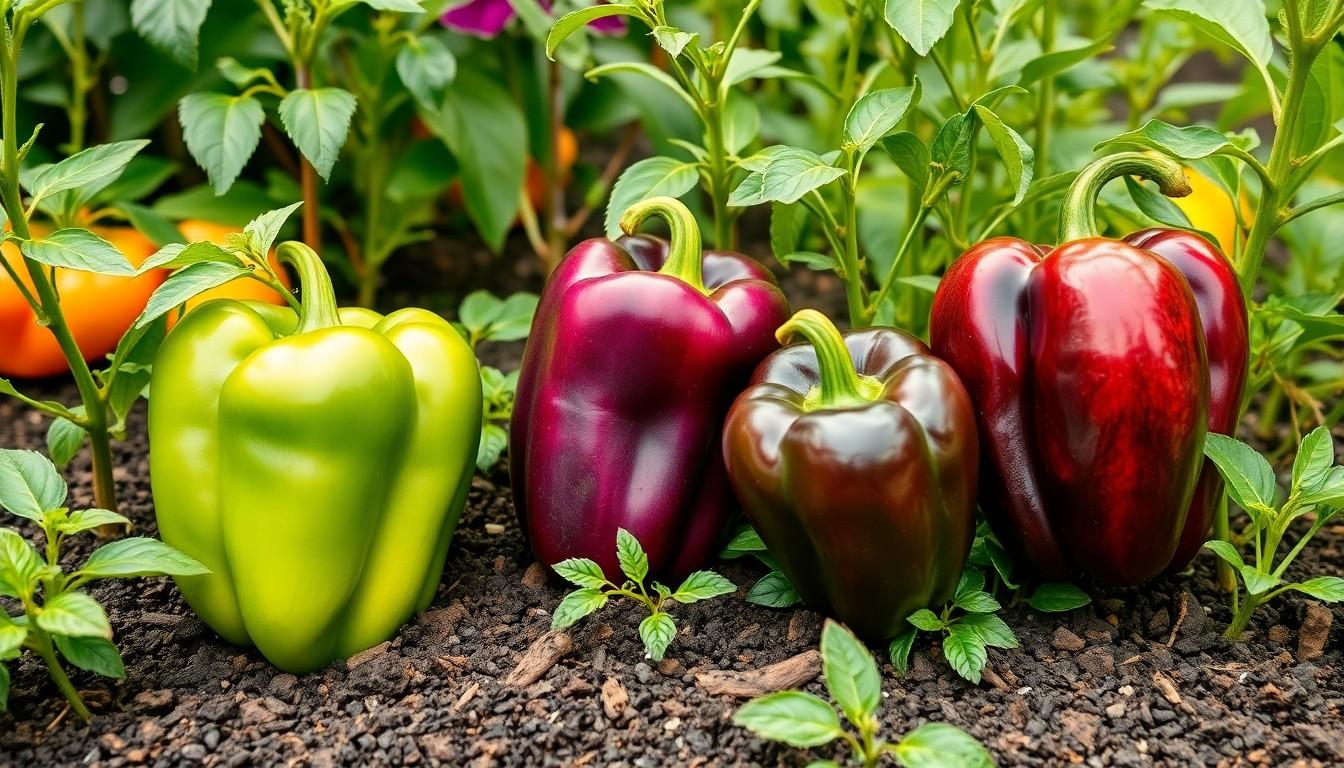The Best Fluffy Pancakes recipe you will fall in love with. Full of tips and tricks to help you make the best pancakes.

Bell Pepper Gardening Tips: Unlock Secrets for Vibrant, Healthy Harvests
Growing bell peppers can be as rewarding as it is colorful. Imagine plucking vibrant, crunchy peppers right from your garden—talk about a fresh upgrade to your salad! But before diving in, it’s crucial to know a few tricks of the trade. After all, no one wants to end up with a garden full of sad, shriveled veggies resembling sad little balloons.
Bell Pepper Gardening Tips
Choosing the right location for bell pepper plants ensures they thrive. Select a spot that receives at least six hours of sunlight each day. Quality soil plays a significant role; use well-drained soil enriched with organic matter to promote healthy growth.
Watering is crucial. Keep the soil consistently moist, but avoid overwatering, which can lead to root rot. Fertilize plants every four to six weeks, opting for a balanced fertilizer suitable for vegetables.
Spacing matters. Provide adequate space, allowing at least 18 to 24 inches between each plant. This encourages good air circulation, reducing the risk of diseases.
Pest control is essential. Monitor for common pests like aphids and spider mites. Organic insecticidal soap or neem oil serves as an effective treatment.
Pruning isn’t necessary, but removing a few lower leaves helps direct energy toward fruit development. Harvest bell peppers regularly at the desired color; they typically mature from green to red, yellow, or orange.
Considering these tips ensures a productive bell pepper garden. By adhering to sun, soil, water, and pest management guidelines, gardeners can enjoy healthy, vibrant bell peppers in their meals.
Choosing The Right Variety

Selecting the right bell pepper variety enhances the gardening experience. Different varieties can offer unique flavors and colors, making the choice significant.
Popular Bell Pepper Varieties
Common varieties include ‘California Wonder,’ known for its large, blocky shape and sweet flavor. ‘Bell Boy’ offers early harvests, thriving in shorter growing seasons. ‘Chocolate Bell’ adds a unique earthy flavor and dark, chocolate-like color. ‘Purple Beauty’ stands out with its vibrant purple hue, adding an aesthetic appeal to gardens. ‘Numex Twilight’ showcases beautiful, multicolored fruits and a slightly spicy flavor, appealing to diverse palettes. These popular options provide gardeners with various choices, catering to different tastes and garden styles.
Considerations For Selection
Consider climate when selecting a variety, as some peppers thrive better in specific conditions. Disease resistance can play a critical role; choosing resistant varieties may reduce pest problems. Determine growth habits, such as height and spread, to maintain adequate spacing for air circulation. Assess color preferences, as bell peppers evolve from green to vibrant shades, each indicating ripeness and flavor differences. Look at the intended use; certain varieties suit fresh consumption, while others excel in cooking or preserving. These considerations guide gardeners in selecting the ideal bell pepper variety for their garden.
Ideal Growing Conditions
Understanding ideal growing conditions lays the foundation for successful bell pepper gardening. Focus on three key aspects: soil, light, and temperature.
Soil Requirements
Good soil provides essential nutrients for bell peppers. Well-drained soil is a priority, as it prevents root rot. Organic matter influences soil structure, so adding compost boosts nutrient content. A pH level of 6.0 to 6.8 fosters optimal growth. Regular checks on soil moisture support healthy development; soil should remain consistently moist but not soggy. Incorporate mulch to retain moisture and suppress weeds around plants.
Light And Temperature Needs
Bell peppers thrive in full sun, requiring six to eight hours of direct sunlight daily. Adequate lighting enhances fruit production and contributes to vibrant color. Temperature plays a critical role; daytime temperatures between 70°F and 85°F favor growth. Night temperatures should not drop below 60°F, as cooler conditions can stunt plant development. Using row covers can protect young plants from unexpected temperature fluctuations. Adjusting these elements ensures a productive garden.
Planting Techniques
Effective planting techniques play a crucial role in bell pepper gardening success. Proper preparation ensures healthy growth and bountiful harvests.
Seed Starting Indoors
Starting seeds indoors requires careful attention. Begin 8 to 10 weeks before the last frost date. Choose seed trays filled with a seed-starting mix, providing good drainage. Maintain a temperature of 70°F to 80°F for optimal germination. While seedlings emerge, keep them under grow lights or near a sunny window. Once seedlings grow two sets of true leaves, thin them to one plant per cell to reduce competition. Regularly monitor moisture levels, avoiding overwatering to prevent damping-off disease.
Transplanting Seedlings
Transplantation is a pivotal moment in bell pepper gardening. Move seedlings outside after the last frost and once nighttime temperatures reach a minimum of 60°F. Prepare the planting site by ensuring it gets full sun. Space each plant 18 to 24 inches apart in rows or staggered patterns for air circulation. Gently remove seedlings from their containers, avoiding damage to the roots. When planting, bury them up to the first set of true leaves, promoting strong root development. Water thoroughly after transplanting, helping the plants establish in their new environment.
Care And Maintenance
Maintaining bell peppers involves diligent care and attention to detail. Proper watering and fertilization techniques enhance the growth and yield of these vibrant vegetables.
Watering Guidelines
Consistent moisture is essential for bell pepper plants. Aim for watering at least once a week, ensuring the soil stays evenly moist but not soggy. Deep watering is beneficial, as it encourages the plants to develop strong root systems. Rainfall may contribute to this moisture balance, so adjust the schedule accordingly. Mulching around the base helps retain moisture, reducing the frequency of watering. Always check the soil moisture level before watering to avoid overwatering, which can lead to root rot.
Fertilization Tips
Every four to six weeks, apply a balanced fertilizer to support healthy growth. Selecting a fertilizer with an N-P-K ratio of 5-10-10 or similar encourages robust fruit development. Spread the fertilizer evenly around the base of the plants, ensuring it doesn’t touch the stems. Watering after fertilization helps integrate nutrients into the soil. Additionally, organic options like compost or well-rotted manure can enhance soil fertility without the risk of chemical buildup. Keeping an eye on plant health allows for adjustments in fertilization as needed, promoting optimal growth.
Pest And Disease Management
Managing pests and diseases is essential for a successful bell pepper garden. Gardeners must be vigilant about protecting their plants.
Common Pests To Watch For
Aphids can infest bell pepper plants, sucking sap and causing leaf curl. Spider mites may appear, especially in dry conditions, leading to stippling on leaves. Whiteflies can create similar problems, spreading viruses and weakening plants. Thrips present another challenge by damaging flower and leaf tissue. Recognizing these pests early helps prevent larger infestations, ensuring plants remain healthy.
Disease Prevention Strategies
Proper spacing allows for air circulation, minimizing disease risk. Watering in the morning reduces moisture on leaves, which inhibits fungal growth. Utilizing disease-resistant varieties offers an additional layer of protection. Routine monitoring of plants aids in the early detection of issues, leading to timely interventions. Implementing crop rotation prevents soil-borne diseases from reemerging in successive seasons.
Harvesting And Storing
Harvesting bell peppers at the right time enhances flavor and texture. Look for vibrant color and firmness to determine readiness. Gardeners typically harvest peppers when they reach full size but before they lose their shine. For the best taste, it’s beneficial to pick them when they’re still green, although some varieties may be enjoyed in their ripest red or yellow state. Use sharp garden shears or scissors for clean cuts. Avoid twisting or pulling, as this can damage the plant.
Storing bell peppers correctly preserves their freshness and nutrients. After harvesting, gently rinse peppers in cool water to remove dirt. For short-term storage, keeping them in the refrigerator’s vegetable crisper maintains quality for about one week. Wrapping peppers in a paper towel can absorb excess moisture, extending freshness. For long-term options, consider slicing and freezing. Vacuum-sealing helps prevent freezer burn. Each method ensures that homegrown peppers retain their vibrant taste and nutritional value.
Growing bell peppers can be an enjoyable and fruitful endeavor. By following essential gardening tips and selecting the right varieties, gardeners can cultivate vibrant and healthy peppers that enhance their meals.
Maintaining optimal growing conditions and practicing diligent care will lead to a bountiful harvest. Regular monitoring for pests and diseases ensures plants stay healthy and productive.
With proper harvesting and storage techniques, gardeners can enjoy the fruits of their labor while savoring the fresh flavors of homegrown bell peppers. Embracing these practices will not only yield delicious results but also create a fulfilling gardening experience.
